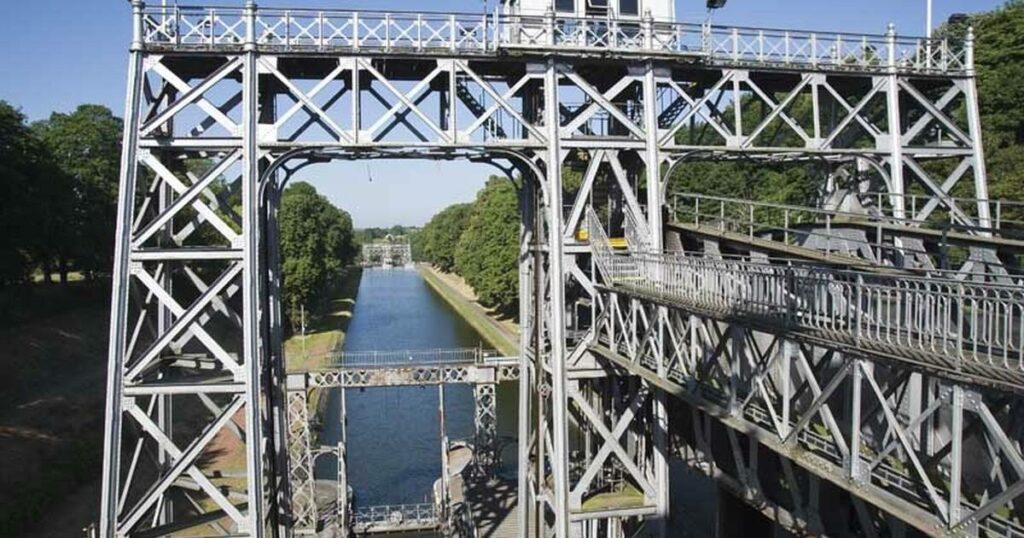One of the great engineering projects of the 19th-century is hidden away in the rust belt of Wallonia. A Unesco World Heritage site, the four ship lifts on the Canal du Centre were built in the 1880s to connect the Meuse and Scheldt rivers.
Napoleon had already tried to build a canal to link northern France with the Ruhr region, but his engineers were defeated by a 70-metre ridge calling for a chain of 33 separate locks.
The problem was finally solved by a British engineer who designed four enormous hydraulic lifts. These astonishing iron structures employ the laws of fluid mechanics to lift barges floating in huge watertight troughs. As the upper trough descends with a barge floating inside, the lower one is pushed up by water pressure.
Opened by King Léopold II in 1888, the lifts could raise a 300-tonne barge 17 metres in just a few minutes, using nothing more than water pressure.
For over a century, these lifts were a vital part of Europe’s inland waterways, carrying barges laden with coal and gravel. They are now too small for huge modern barges, but have been preserved in working order by local enthusiasts, who run boat tours in the summer.
Derek Blyth’s hidden secret of the day: Derek Blyth is the author of the bestselling “The 500 Hidden Secrets of Belgium”. He picks out one of his favourite hidden secrets for The Brussels Times every day.

